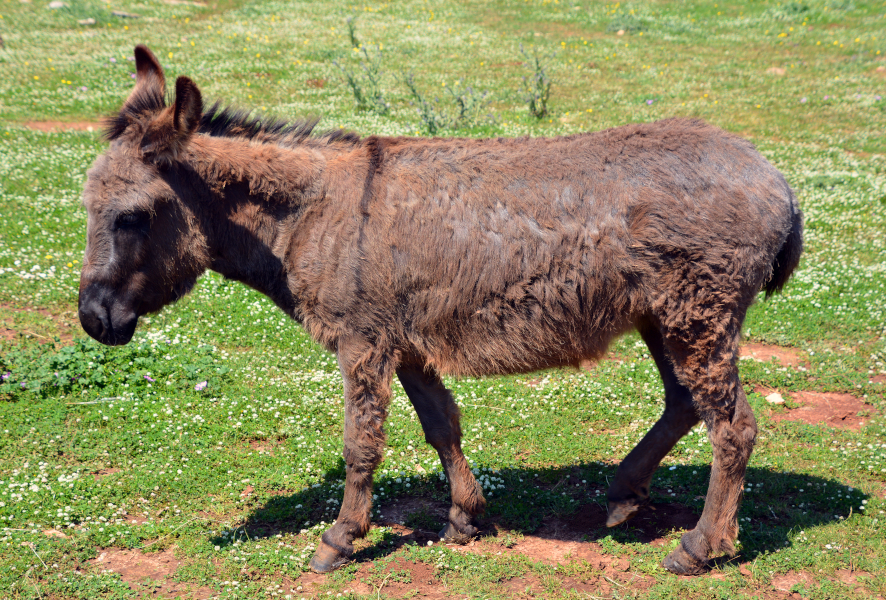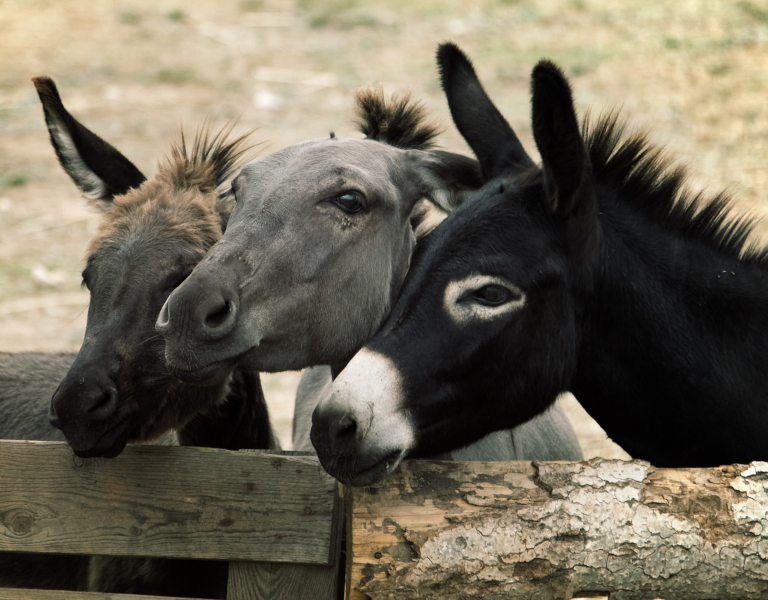Quick Summary

Click here for Price and Turnaround Time
Phenotype: Donkeys described as having no light points (NLP) exhibit darker pigment around the muzzle, eye rings, belly, and upper and inner aspects of the legs. This phenotype is seen in several breeds.
Mode of Inheritance: Autosomal recessive
Alleles: N = Normal (light points), NLP = No light points
Breeds appropriate for testing: American Miniature, Berry Black, Bourbonnais, Cotentin, Normand, Poitou, Provence, Pyrenean
Explanation of Results:
- Donkeys with N/N genotype will have light points and cannot transmit this NLP variant to their offspring.
- Donkeys with N/NLP genotype will have light points, but are carriers of this NLP variant. They will transmit this NLP variant to 50% of their offspring. Matings between two carriers result in a 25% chance of producing a foal with no light points.
- Donkeys with NLP/NLP genotype will have no light points and will transmit this NLP variant to all of their offspring.
Donkey Coat and Hair Length Panel
$75 per animal

Donkeys typically have light points (also called "pangare"), which describes the pale color around the muzzle, eye rings, belly, and upper and inner aspects of the legs. However, donkeys in several breeds have darker pigment in these areas and are described as no light points (NLP). A mutation in agouti signaling protein (ASIP) is associated with the no light points phenotype.
NLP is an autosomal recessive trait, thus two copies are required for NLP to be observed. Donkeys with only one copy (carriers) of the NLP variant exhibit light points, but they can produce offspring that have no light points. Breeding two carriers has a 25% chance of producing a NLP foal and a 50% chance of producing a carrier.
Genetic testing for donkey NLP is recommended for Pyrenean, Berry Black, Poitou, Cotentin, Provence, Bourbonnais, Normand, and American Miniature donkey breeds. Genetic testing helps breeders to determine the genetic status of breeding stock for No Light Points mutations and to select appropriate mating pairs to favor, or to avoid, producing foals with this phenotype.
